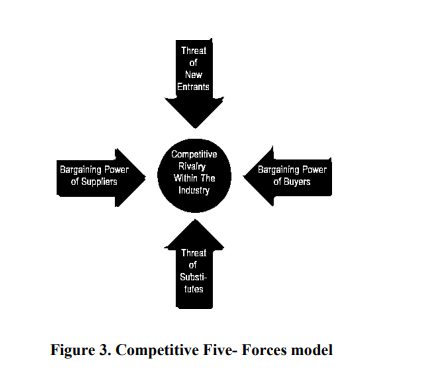Micro-environment is the environment that is closer to the firm in comparison to the macroenvironment. Under macro-environment comes: competitive environment which requires looking into the rivalries, the emerging firms that may enter into the industry, the substitute product that may replace the existing product (in the manner type writer was replaced by computer, the bargaining power of buyers and suppliers.
To analyze the competitive environment, there are various models. Some of these models are the SWOT model , to analyze the strength, weakness , opportunities and threat of firms; the industry( business) Life-Cycle model , to analyze the phase of the business has reached and its future prospect; the competitive Five-Forces model, the model developed by Porter , to understand the attractiveness of the industry and its potential for future growth. Figure 3 illustrates the competitive Five- Forces model:

The competitive Five –Forces model helps to analyze, among others:
If the existing or emerging barriers are easy or difficult for the entry of competitors If the existing products can be easily and, specially, cheaply substituted If the buyers have strong position or work together to order large volumes If the suppliers are strong, if they are monopolies If the rivalry within the competitors has one dominant player, or if there are two dominant players, or many players
Customers
Customers can be buyers from the firm, or suppliers to the firm. customers also shape the decision making process of marketing.
Internal environment
Internal environment marketing looks at the strength, and weaknesses that the firm has and the opportunities it can seize and the threat it may face. The analysis of internal environment makes clear:
- The financial resources of the firm
- The human resources, such as the capability of the management
- The technological resources at its disposal
- The organizational culture, such as , culture of innovation
- Access to credit
- Research and development capability
- Intangible asset , such as image, reputation through its brand, customers’ perception of the firm
- Other infrastructure , such as, buildings and facilities
- SWOT Model SWOT model can aid in the analysis of the internal environment. SWOT stands for Strength, Weakness, Opportunity, and Threat.